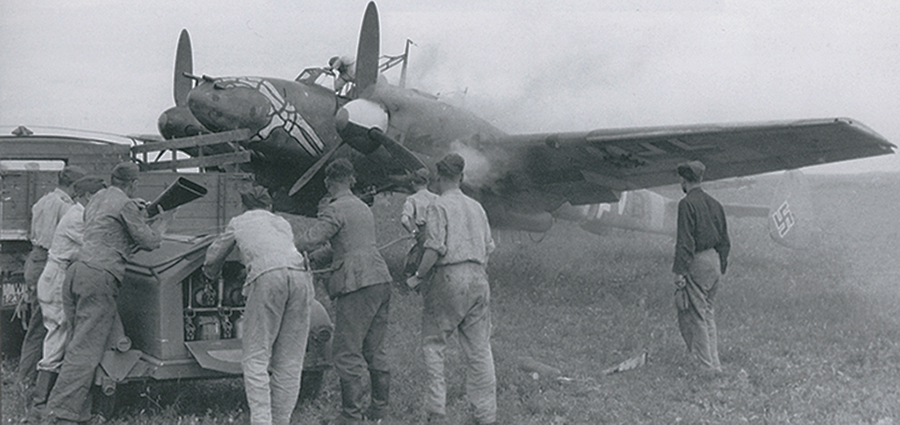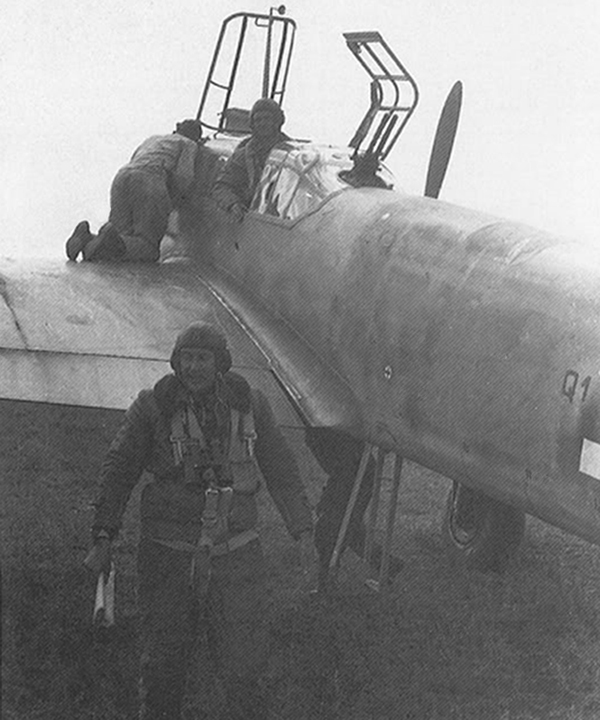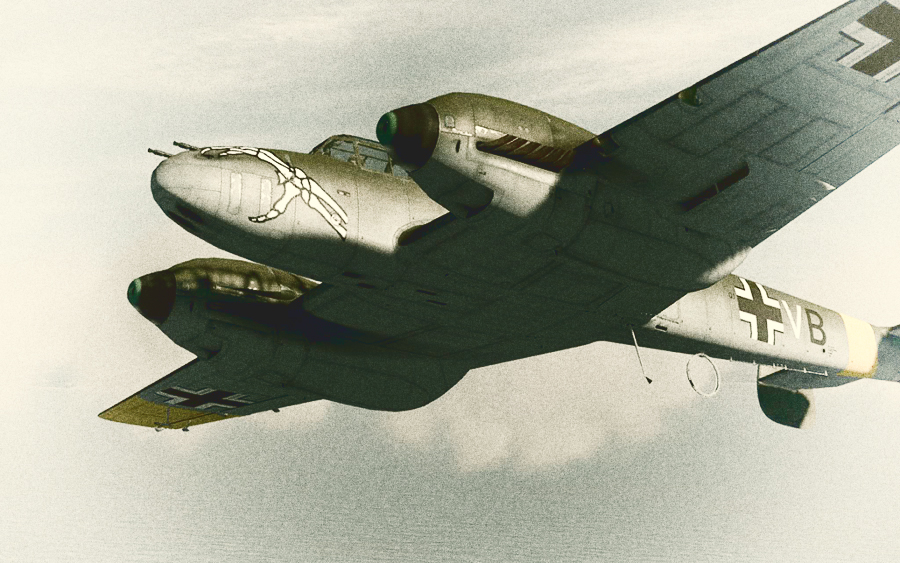
The skeletal hand, the bony fingers reaching out toward its prey, has made this Bf 110, which flew over southern Russia in 1943, a particular favorite of modelers. In the photograph, which is one of several taken at the time, the port engine has caught fire—either, given that the pilot still in the cockpit, when the plane was being started or shortly after it had landed. One member from the ground crew cautiously approaches with a hose while the others look on.
Given that the plane is obscured by smoke, there has been some uncertainty as to the type. Merrick identifies it as a Bf 110F-2 and describes the undersides of the wing and the spinner tips as yellow, which indicated to him that the plane belonged to the Stab of III.Gruppe. But, given how much darker the tips appear to be when compared to the yellow tail band around the fuselage, they more likely were green, the color of I.Gruppe Stab—an attribution seemingly confirmed by the Staffel letter "B."
Rosch and Philpott identify the plane as a G-2, as does Campbell. Although there were variations in the transition from the F-type, there are several features that are characteristic of the G-2 alone (there was no G-1). It had the more powerful DB 605 engine, but it was problematic and the spark plugs and ignition wiring tended to overheat and catch fire. Small air intakes were fitted just above and in front of the exhaust pipes to cool them, but problems with the engine still were unresolved when the plane went into service in January 1943.

The G-2 also used the dual-barrel MG 81Z (Zwilling, twin) machine gun in the rear cockpit, which now opened from the side, characteristics that are most evident in the picture above. Here, too, one can see the diminutive Geschwader code Q1 that was adopted sometime in 1943, during the last eighteen months of the war. The skeletal fingers on the nose of the plane also extended over the top of the engine cowlings. They are not visible in this photograph but can be seen in one taken immediately afterwards.
The two photographs together show the unit code to be Q1+VB, which indicates that the plane belonged to Stab./NAGr.1, a Nahaufklärungsgruppe or short-range reconnaissance group. (Note the binoculars around the neck of the observer.) One then wonders whether the apparent absence of gun ports for the two MG 151 20mm canons usually fitted on the underside of the nose were replaced with an aerial camera pack, in which case the sub-variant would be a G-3, as Ketley contends.


The dense camouflage pattern probably was splintered in gray (RLM 75 over RLM 74), although it appears heavily mottled in the photographs. The tips of the propeller spinners are green, the color of the Stab, which also should be the color of the individual aircraft letter. That it is white presumably is because an identifying mark in dark green would not be as immediately visible as one in white outlined in green.
References: Luftwaffe Camouflage and Markings 1933-1945: Photo Archive 1 (2007) by K. A. Merrick, Eddie J. Creek, and Brett Green (p. 98); Luftwaffe Codes, Markings & Units 1939-1945 (1995) by Barry C. Rosch (p. 306); German Fighters over Russia (1980) by Bryan Philpott (pp. 87-91); Messerschmitt Bf 110/Me 210/Me 410 (2003) by Heinz Mankau and Peter Petrick (pp. 211-222); Luftwaffe Emblems, 1939-1945 (2012) by Barry Ketley (p. 152); Messerschmitt Bf 110 Zestörer in Action (1977) by Jerry L. Campbell (p. 48); Messerschmitt Bf 110 Zerstörer & Nachjager, No. 41 (1993) (p. 5) (in Japanese).